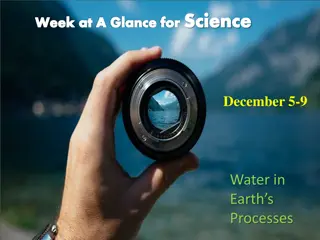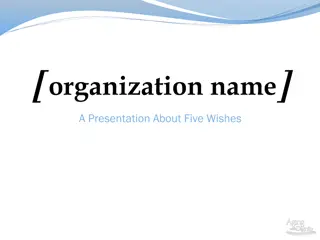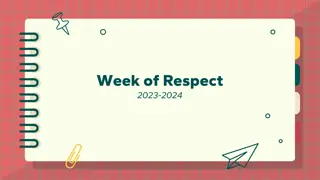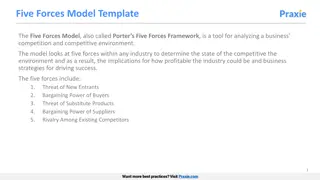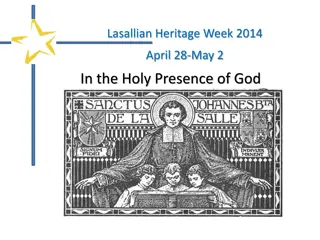
Exploring the Cappadocian Fathers and Early Christian Century
Delve into the significant figures of early Christianity like St. Basil the Great and the Cappadocian Fathers. Understand their contributions, teachings, and influence on shaping Christian beliefs and practices. Journey through the 4th century developments, theological debates, and pivotal moments in the Christian faith, all while reflecting on timeless prayers and lessons from the past classes.
Download Presentation

Please find below an Image/Link to download the presentation.
The content on the website is provided AS IS for your information and personal use only. It may not be sold, licensed, or shared on other websites without obtaining consent from the author. If you encounter any issues during the download, it is possible that the publisher has removed the file from their server.
You are allowed to download the files provided on this website for personal or commercial use, subject to the condition that they are used lawfully. All files are the property of their respective owners.
The content on the website is provided AS IS for your information and personal use only. It may not be sold, licensed, or shared on other websites without obtaining consent from the author.
E N D
Presentation Transcript
Opening Prayer Lord Jesus, our Savior, let us now come to you: Our hearts are cold; Lord, warm them with your selfless love. Our hearts are sinful; cleanse them with your precious blood. Our hearts are weak; strengthen them with your joyous Spirit. Our hearts are empty; fill them with your divine presence. Lord Jesus, our hearts are yours; possess them always and only for yourself. (Prayer of Augustine, 354-430)
What do we remember from the previous classes? Focus on Apostolic succession and unity Suffering/martyrdom, end of most Roman persecutions Christian Identity Lens of Christ to view Jewish/Greek thought Developing a defined structure for unity Heresies, heresies and more heresies
4th. c. Christianity Conversion of Constantine, Church/state relationships were changing Heresies, division and the first major councils Trinity, Christology, Holy Spirit Arius was still running up trouble, divisions were increasing Rise of desert monasticism
Week Five St. Basil the Great St. Gregory of Nazianzus St. Gregory of Nyssa St. Macrina
The Cappadocian Fathers They were like a think tank for the Holy Trinity what does unity mean? Is there such thing as too much emphasis? Oneness in Three persons Drawn to monasticism and simplicity of life and eventually to serve the Church Defend orthodoxy of Nicene Creed Defined Christian orthodoxy in the Eastern Church
St. Basil the Great Practically Christian royalty Grandson of a martyr Parents and three siblings are saints Brother is also a Doctor of the Church First a scholar, then a monk, then called to serve the Church a man of action Why was he so Great? Renowned for his holiness, wisdom and setting the rule for monastic life and Christian philanthropy.
St. Basil the Great Monastic life Followed the Gospel - give it all away Started a monastic community in the hills by the Iris River Philanthropy Pastoral life of the Church should follow Jesus: prayer, charity and healing Established hospitals, hostels, poorhouses
St. Gregory Nazianzus Focused on secular studies especially literature, poetry Met Basil in Caesarea of Pontus and then again in Athens. Followed him to the hills by the Iris Called home by his father (a bishop) who ordained him in an act of tyranny -Kept running away to monastic life -Known as The Theologian
Discussion How do we live our Christian life to the fullest? What does it mean to live in community? How do we understand magisterium? What is the power of Christian friendship? How do we live out our vocation when the unexpected happens? How can we serve the poor today?
St. Gregory of Nyssa Brother of St. Basil the Great - became bishop of Nyssa Doctor of the Church, a thinker Most philosophically minded of the three Started off as a teacher, but became a monk after his wife died . And then was called to serve the Church. A in Theology, C- in Church administration
Council of Constantinople I The Cappadocian Fathers all fought Arianism (St. Basil died just before the Council) Reaffirmed Nicea Defined the Divinity of the Holy Spirit and completed the Creed we recite at Mass
Trinity God is one substance (essence) in three persons final answer to Arianism Who was Jesus? Who is the Holy Spirit? What can we say about what God is not? ---- God is Triune, God is infinite, but mostly we should understand who He is by defining what He is not
Discussion Where do we see a lack of acceptance about Church teaching today? Do we struggle with this ourselves? What can we do about it?
St. Macrina With her brother Basil, helped to raise their brothers. St. Gregory wrote a book about her. Devoted student of Scripture and prayer When her betrothed died, she committed her life to virginity and took care of her mother, turned family home into a monastery *Became a standard for a holy Christian woman
Questions? St. Jerome St. Augustine St. John Chrysostom St. Marcella St. Monica


